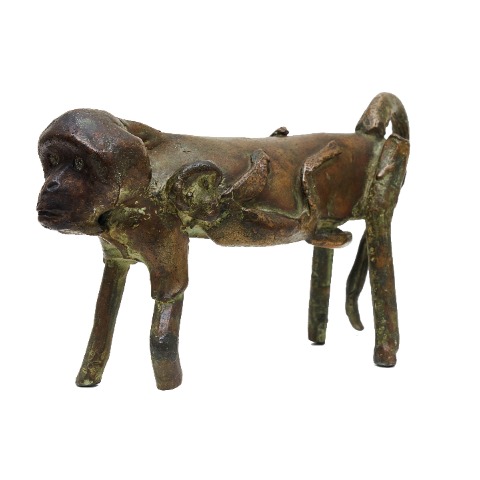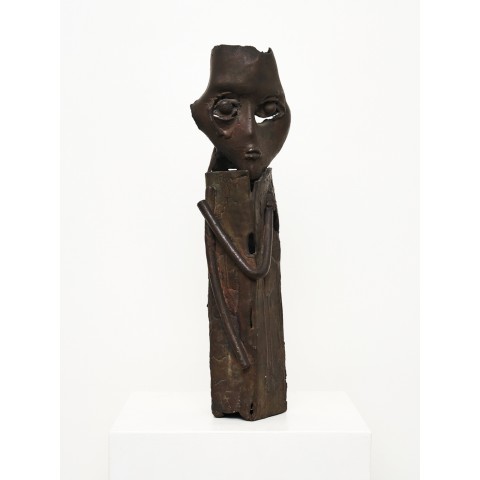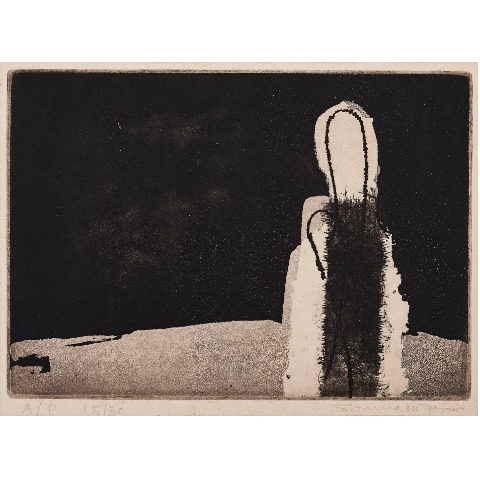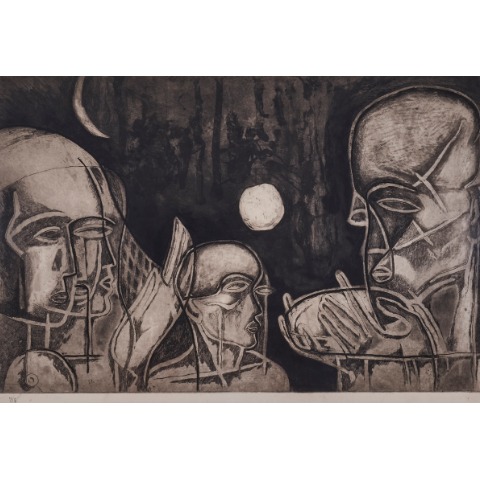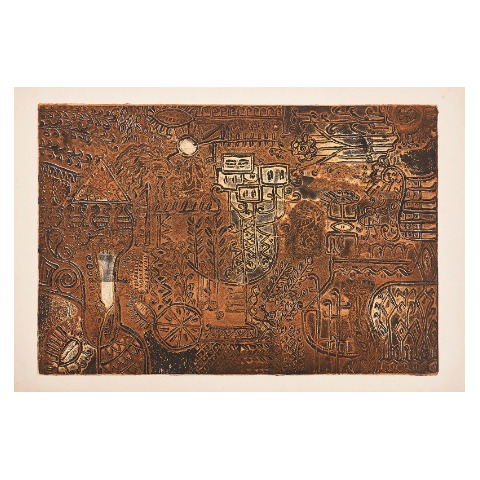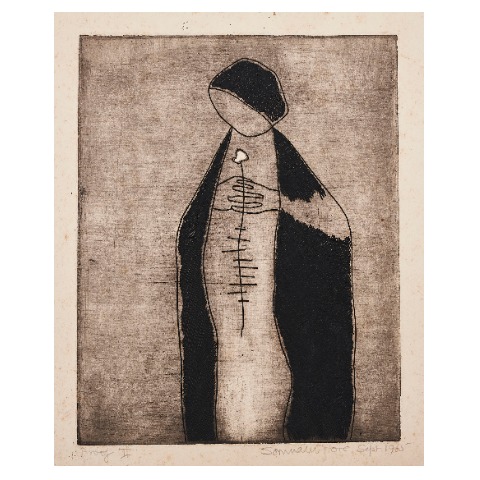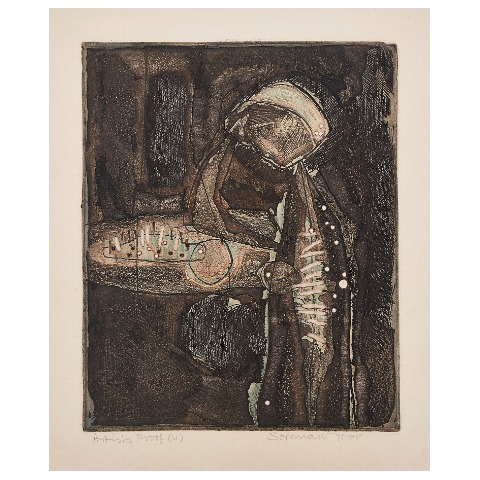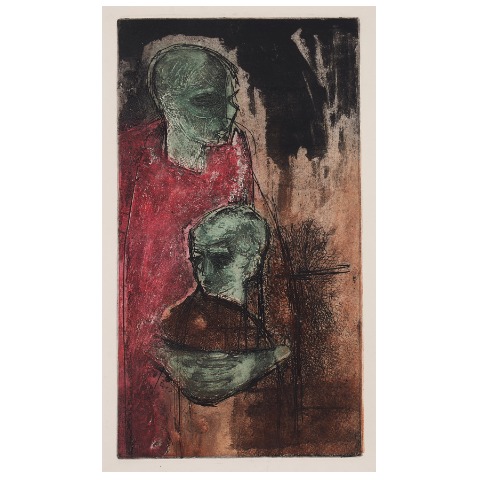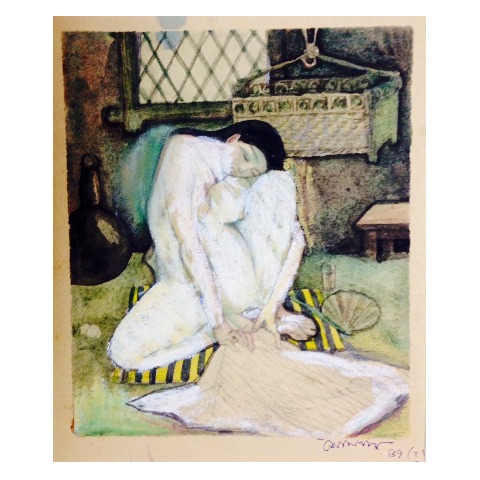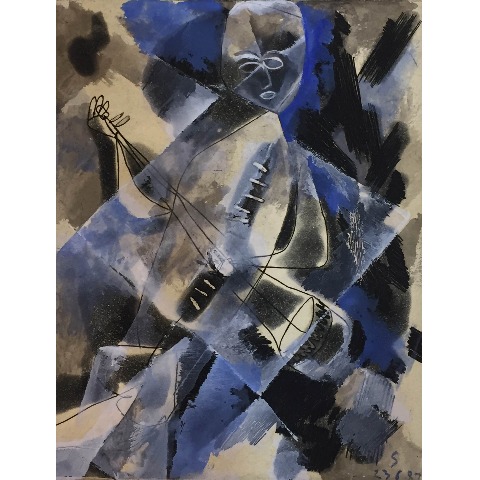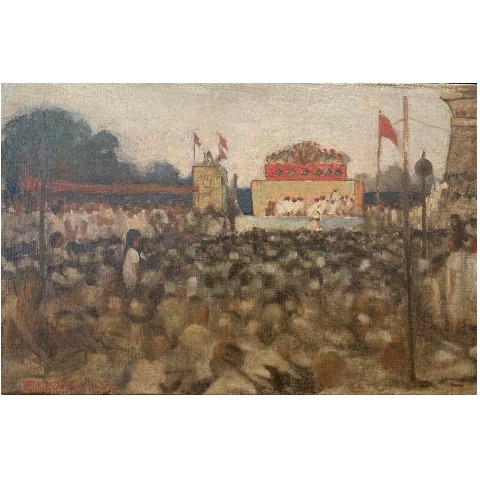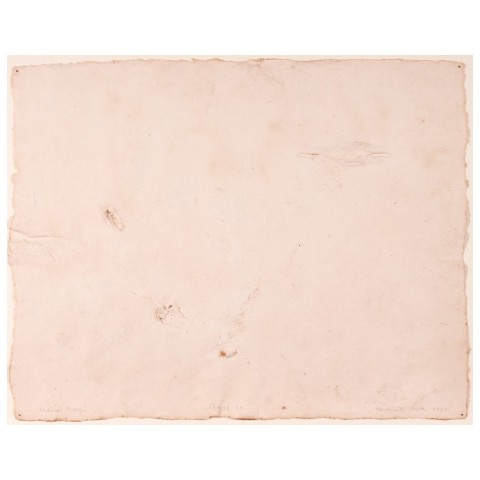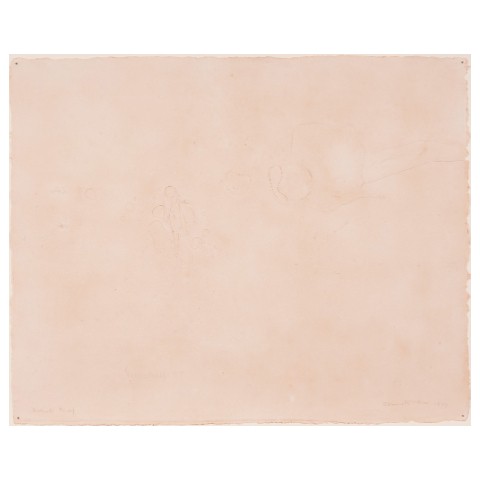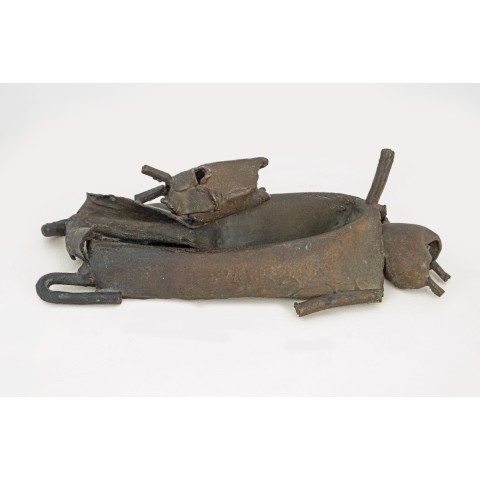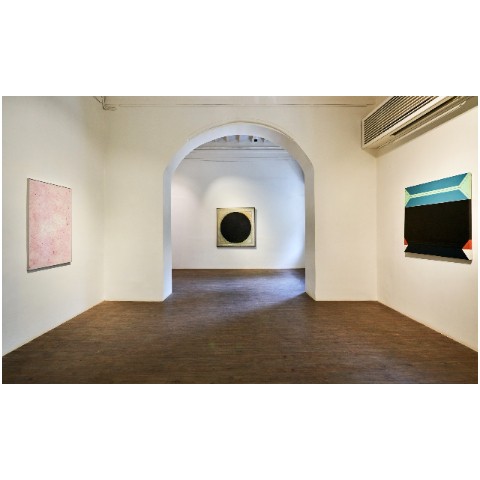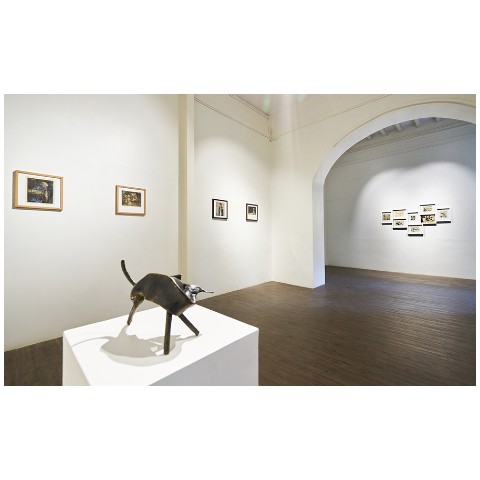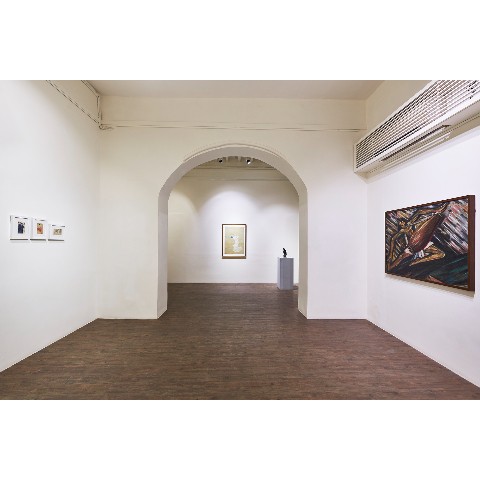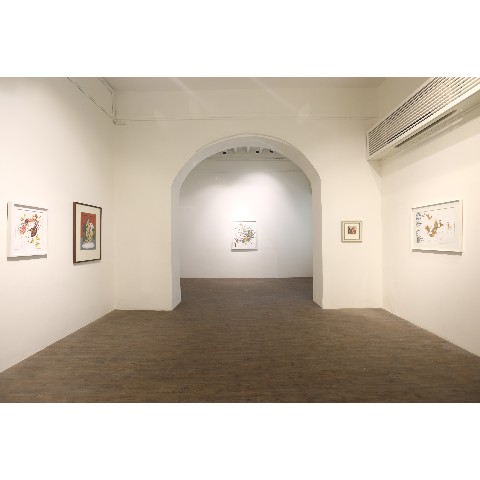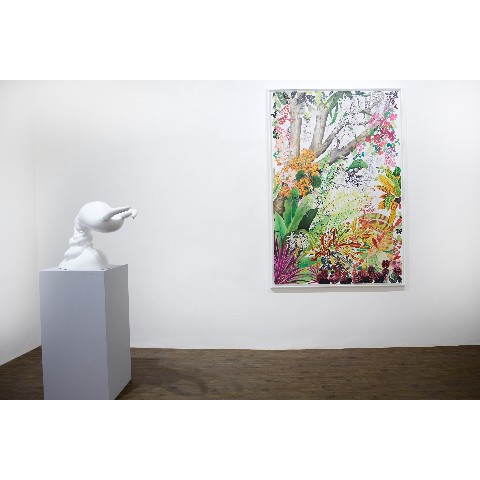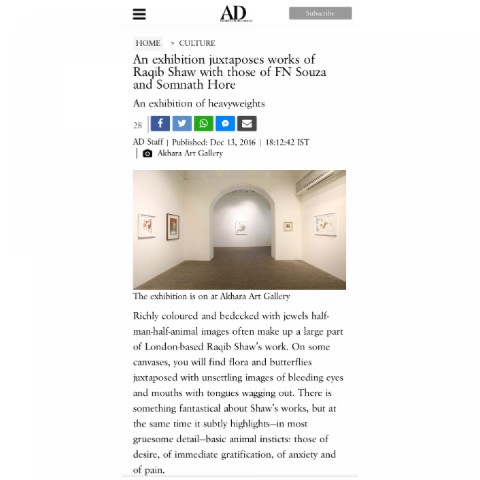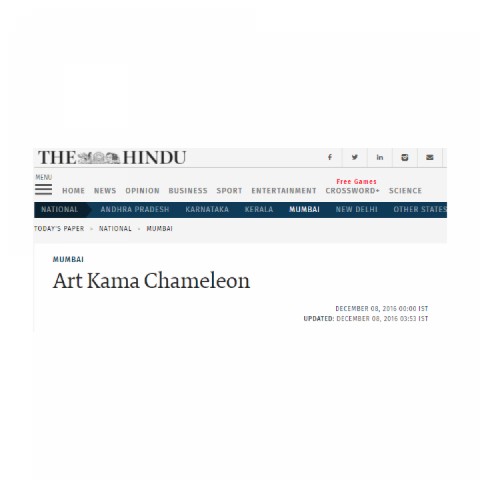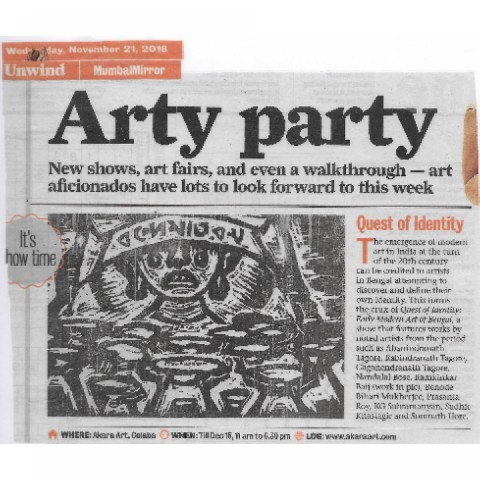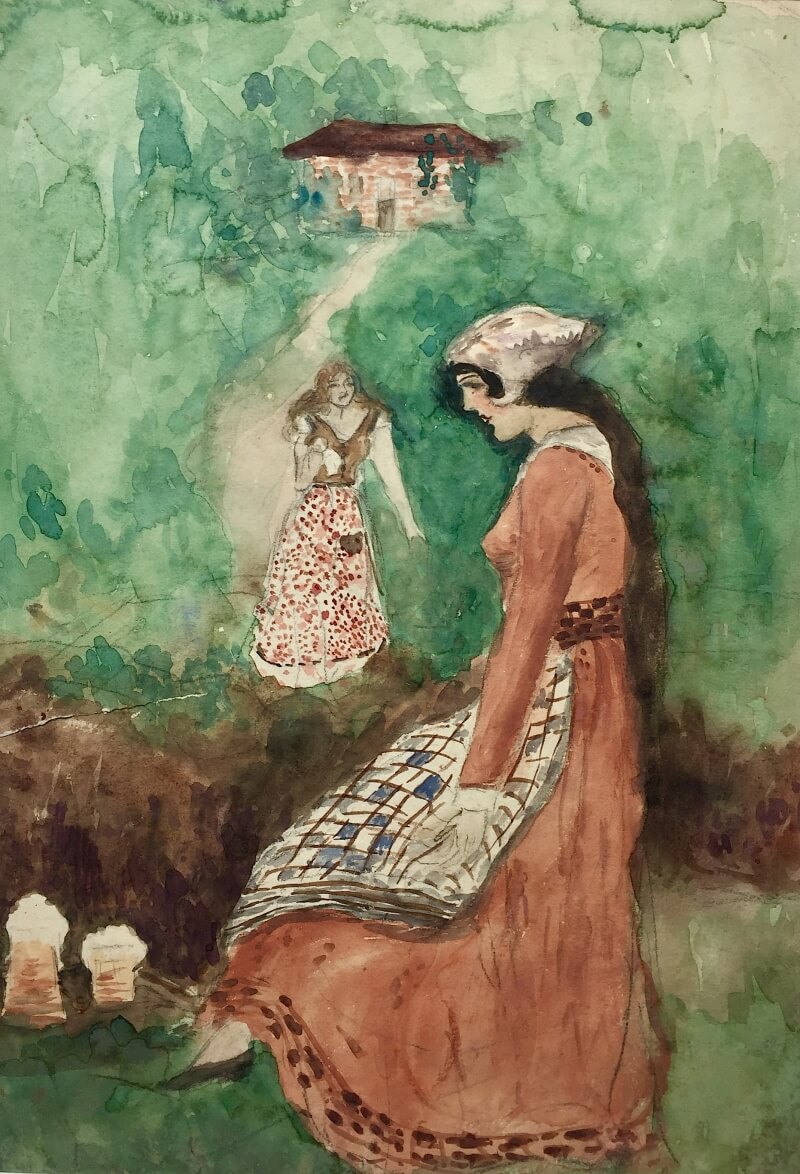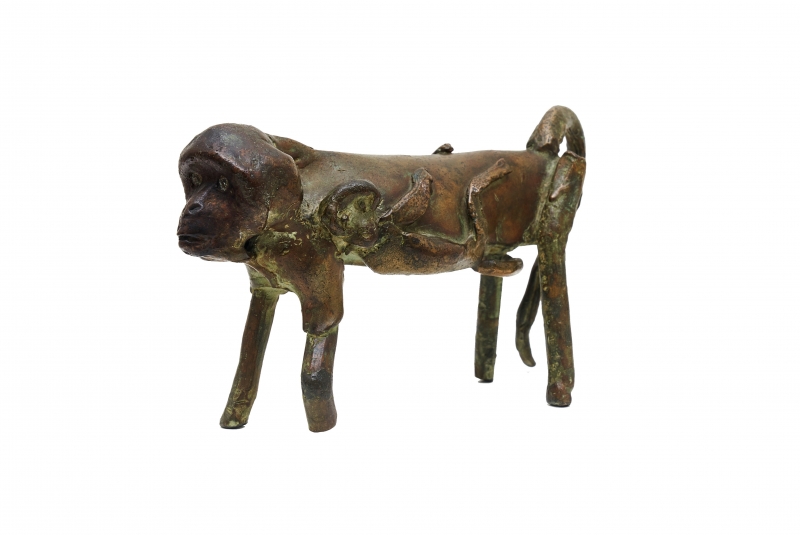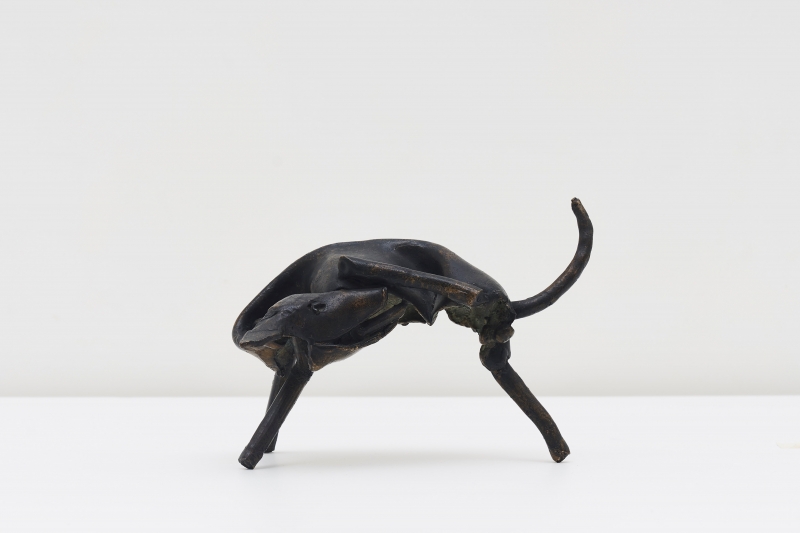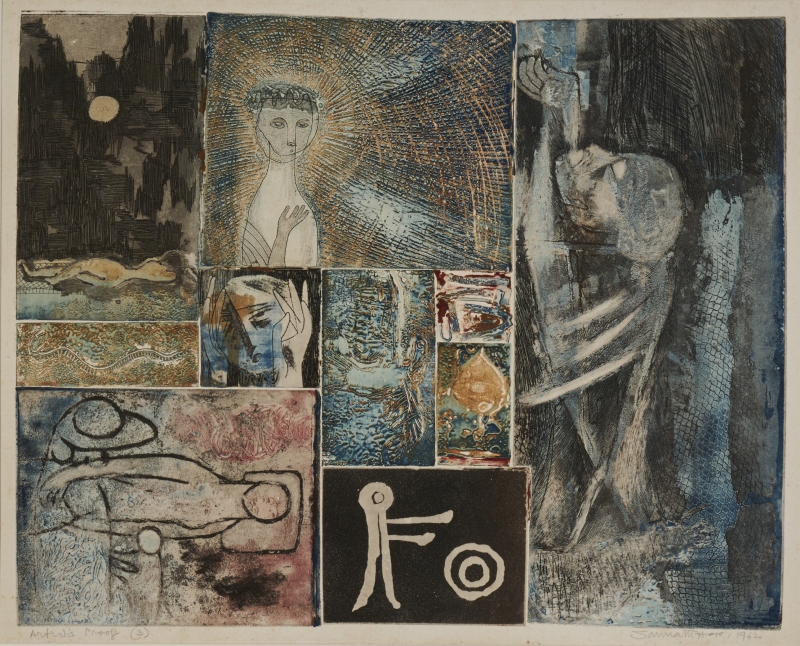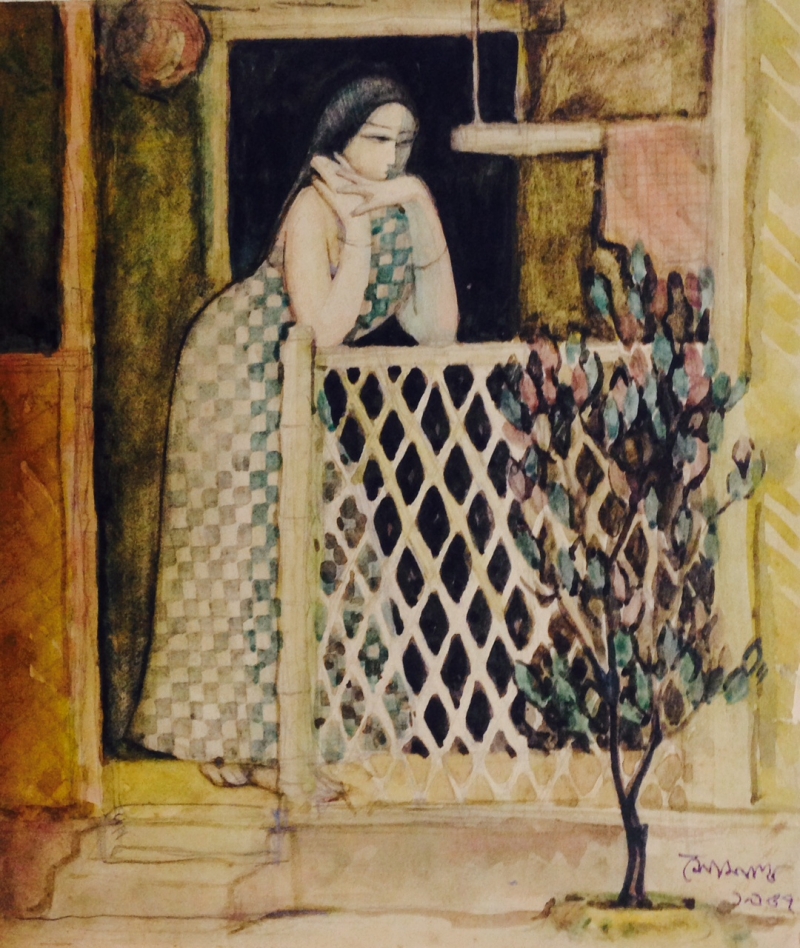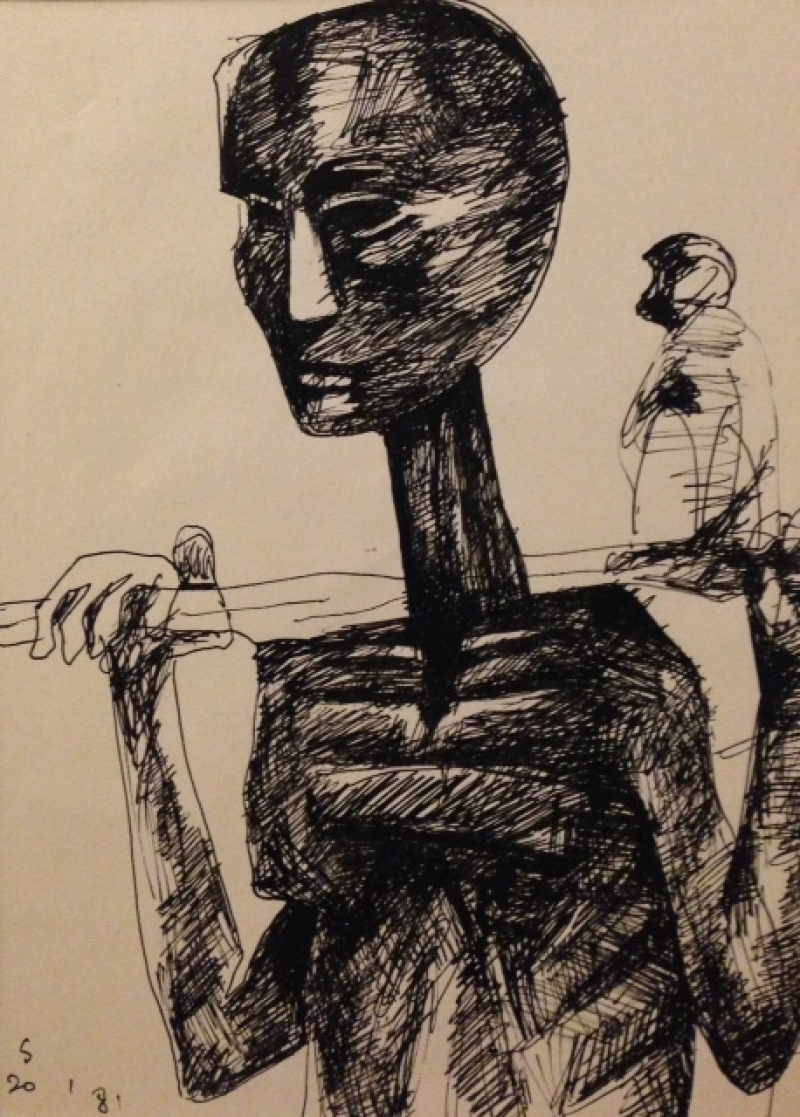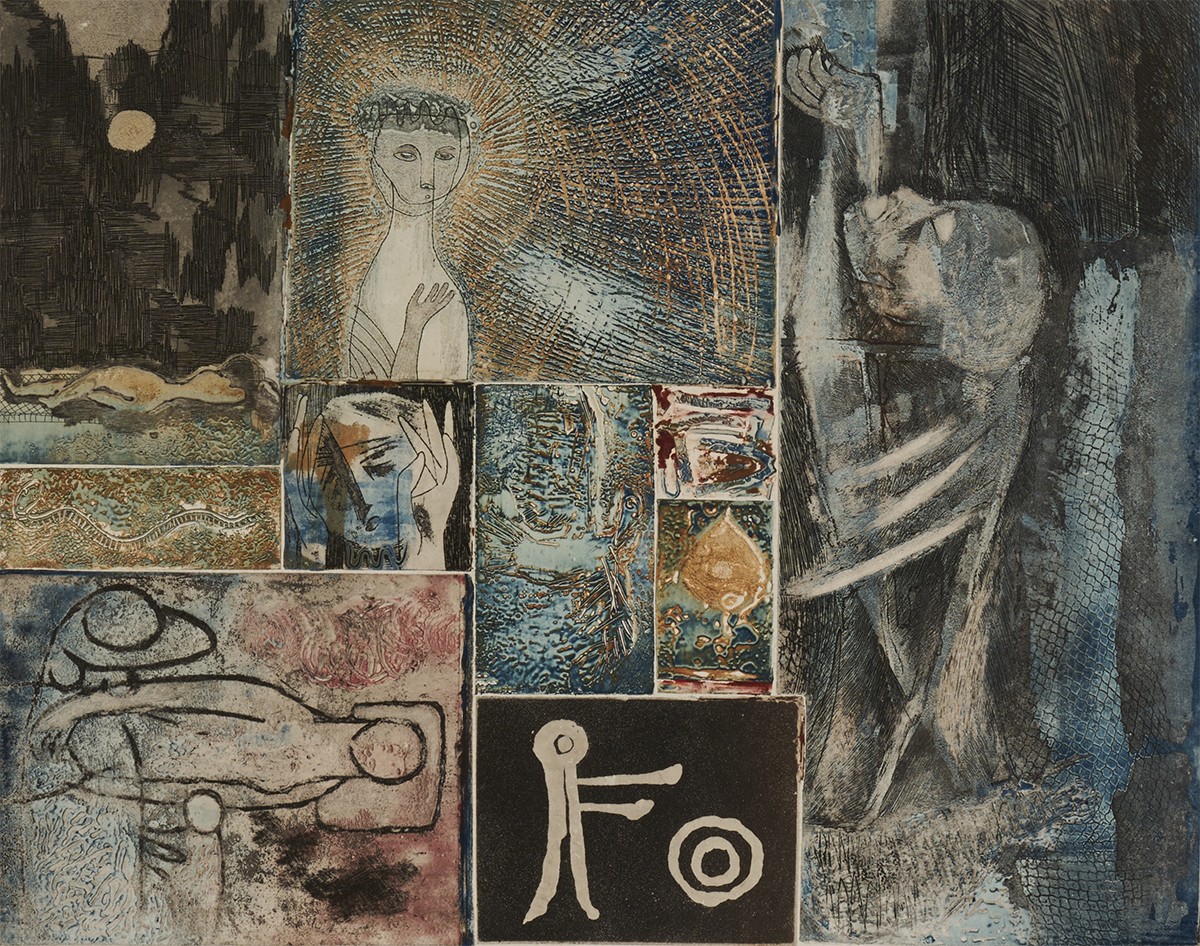
SOMNATH HORE
Akara Modern
1921 -2006
A pioneer
of the twentieth-century modern art movement in India, Somnath Hore is
recognized as a painter, sculptor, printmaker, and social activist. Over the
years, Hore boldly used his extraordinary talents as a graphic artist and
printmaker to express his angst against the socio-political systems that bred
acts of violence. He studied the formal Western style of artmaking,
distinguished by its strong linear quality technique at the Government College
of Art and Craft in Calcutta.
The most
poignant and powerful statement made by Somnath as an artist was his ‘Wounds’
Series - a series that depicted man’s bestiality towards his kind. His themes
and sensibilities within his art reflected the artist’s experiences of violence
and trauma. It was the cataclysmic decades of the 1940s – especially the Bengal
Famine of 1943 and the Tebhaga peasant uprising of 1946 that shaped and moulded
his consciousness as an artist. Throughout his career, Hore experimented with
different printmaking techniques and materials, particularly lithography and
Intaglio. Beginning in 1974, he also started making bronze sculptures of
different scales. One of his largest sculpture, Mother and Child, paid tribute
to the sufferings of the people of Vietnam, which was stolen from Kala Bhavan
soon after he finished it.
Somnath
Hore was a recipient of the Indian Civilian honour of the Padma Bhushan. During
most of his later life, he lived at Santiniketan and taught at Kala Bhavana as
a Graphic Art professor. A solo show, ‘HoreScope-Somnath Hore’ displaying
Hore’s series of work was held at Akara in 2020.
Images

